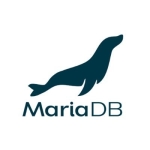Mainly, I do infrastructure support. We do fine-tuning, information, configuration, higher-level availability, and replication. Also, single and clustering solutions - both kinds.
We do on-premises and cloud deployments. This is because some customers use Microsoft Azure, mainly in the financial sector, such as the Sri Lanka Government, who has many databases that cannot go on the cloud. The financial sector also works with on-prem databases.
I am mainly using the SQL Server from 2019. That's the latest version since last January while our customers are mainly using the 2016 and 2017 versions. This is because we are not providing the latest version. We are testing some bugs now. In terms of functionality, I think the 2017 version is better. I have not fully tested the 2019, so I cannot give a recommendation for it.
Its availability for a secured server is one of its most valuable features. Also its replication features are valuable- we can manage eight replicas. Their clustering and availability groups are also valuable.
They do not offer the SQL Server Management tool via the installation. It is a separate tool I use when I'm trying to configure the mirroring with SQL Server Mirroring. This is not supported and I'm getting some errors on the database mirroring. So sometimes I use the 2014 management console and the 2017 server for that. If the customer does not agree to that, I use a query for the database mirroring connections.
Additionally, I think some kind of machine learning related feature should be included. This is because technology is moving fast and all of the customers are getting it easier. So developers are making machine learning products. That's why they should include some kind of a machine learning feature here, too.
Which initial setup are you referring too? It has multiple solutions and installations, some of which are very simple. Clustering is very difficult to setup.
Setup time depends on the customer's environment, including database size, the number of databases, and the amount of data. Last week I did a PLC with two databases and one availability crew. It took two days because one day I did clustering. It can be done in one day but the customer provides another day for that.
Also, because the customers haven't kept some downtime, we request some kind of downtime for the primary server. So sometimes we plan downtime when we need some days for the complete environment.
I'm working with Microsoft solutions in Sri Lanka. We have a technical team for the DB side only - Microsoft SQL Servers, Azure platform, SQL servers. All of those have a security device. And as I mentioned, installation is per requirement. There is no need for a couple of engineers for that.
In terms of maintenance after the deployment, it also varies depending on the number of databases.
On a scale of one to ten, I would rate Microsoft MDS an eight. I'd give it an 8 and not a 10 because it lacks some features, such as machine learning.














